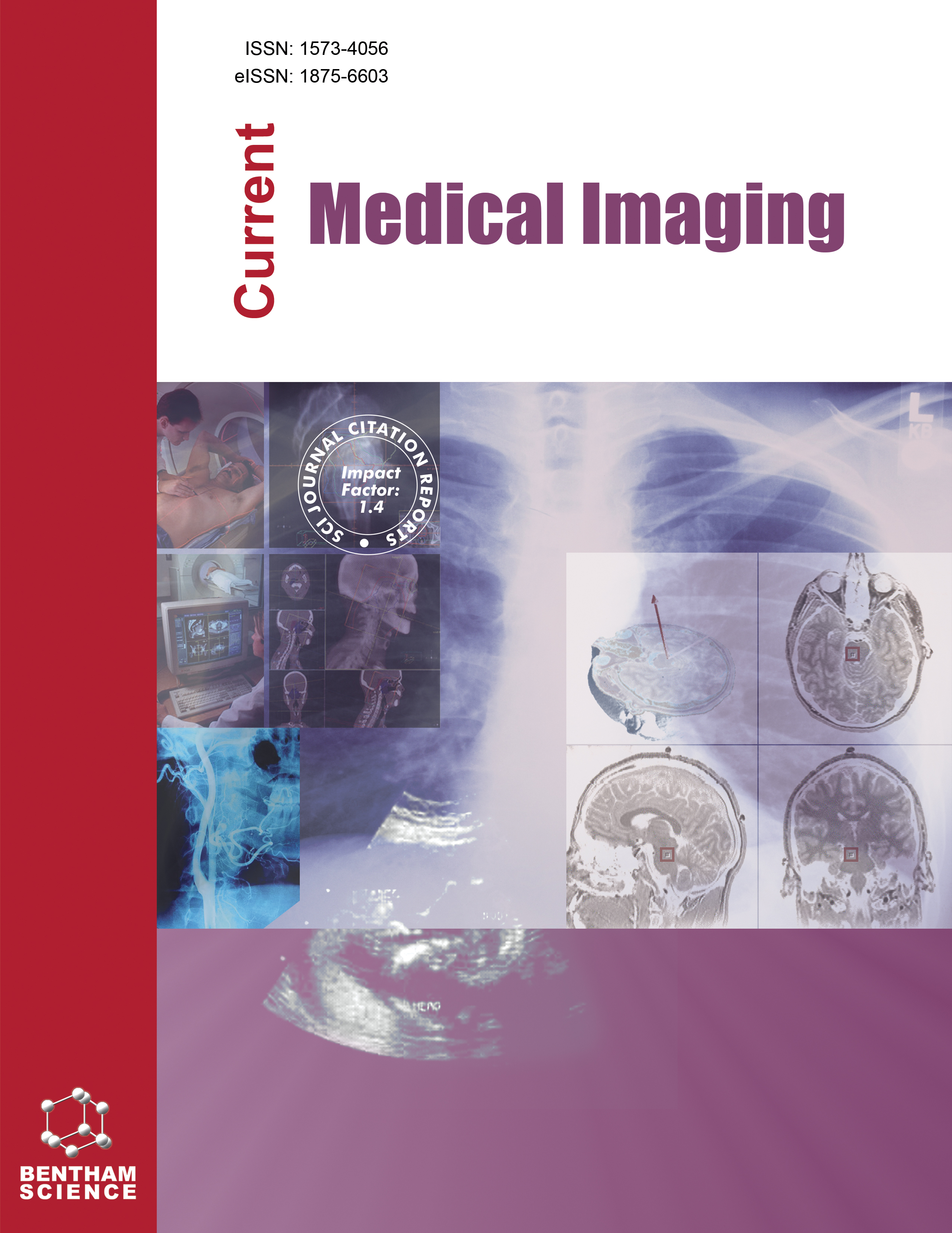-
s The Value of Low-dose Prospective Dual-energy Computed Tomography with Iodine Mapping in the Diagnosis of Gastric Cancer
- Source: Current Medical Imaging, Volume 16, Issue 4, May 2020, p. 433 - 437
-
- 01 May 2020
Abstract
Objectives: This study investigated the radiation dose and value of prospective dualenergy computed tomography (DECT) in the diagnosis of gastric cancer. Methods: Sixty patients scheduled for computed tomography (CT) for preoperative staging were divided into two groups. Thirty patients (Group A) underwent a single contrast-enhanced abdominal CT acquisition using a dual-source mode (100 kV/140 kV). Weighted average images of the two-kilovolt acquisitions and iodine maps were created. The remaining 30 patients underwent a standard CT scan (Group B). Two observers performed a blinded read of the images for gastric lesions, evaluating the image quality and recording effective dose. Results: During the blinded read, observers found 90% (27/30) of the cancers in both groups. The mean imaging quality scores were 2.1±0.9 for Group A, and 2.3±1.1 for Group B. The effective mean doses were 6.59±0.59 mSv and 25.86±0.44 mSv for Groups A and B, respectively. Compared with the control group (B), the imaging quality in the low-dose group decreased a little, but the radiation dose substantially decreased by 74.6%. Conclusion: The new DECT technique is valuable for examining gastric cancer patients. The dualkV scan mode can substantially reduce radiation dose while preserving good diagnostic image quality.


